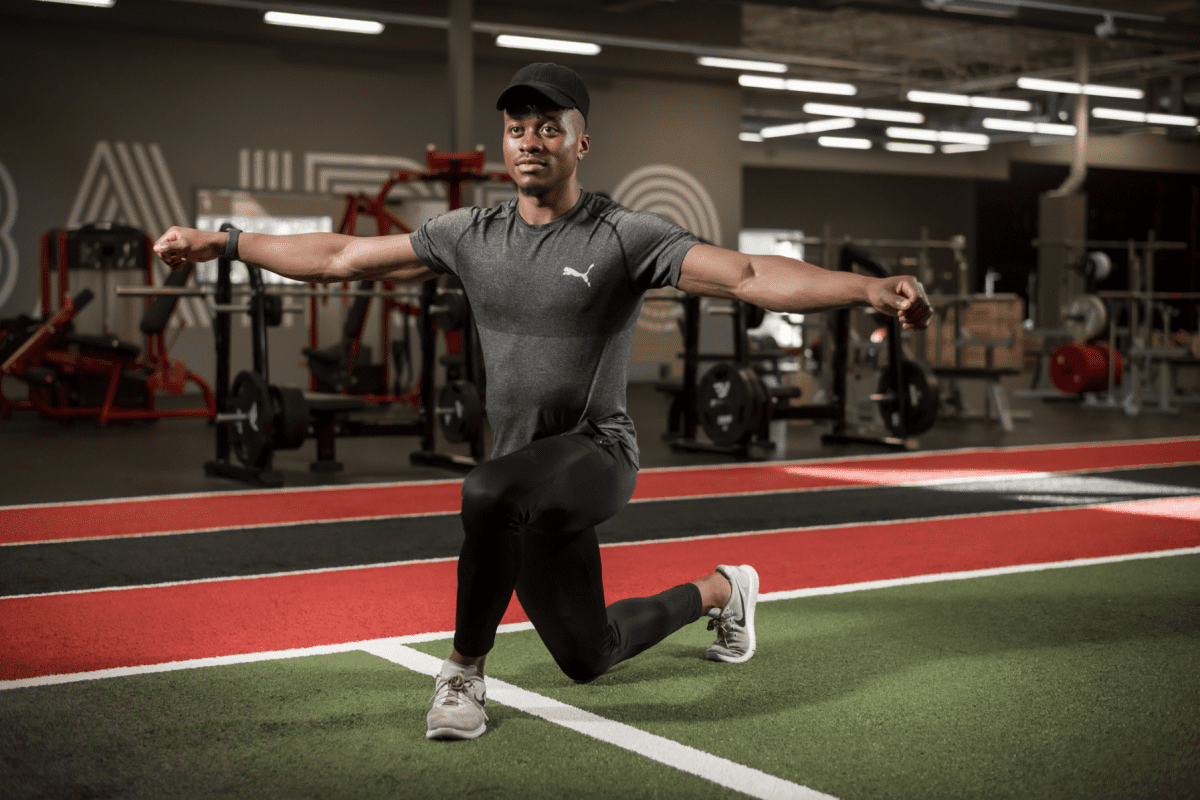The changing of seasons tends to take us by surprise. You’re basking under the sun evening out stubborn tan lines as you listen to your favourite summer playlists. You turn around, and everybody is decked in sweaters and scarves as they rake the multitude of coloured leaves off their lawns. Before you know it, you feel the cold kiss of mother nature as she brings a blanket of snow signalling the coming of winter sports. The time of long-boarding, outdoor runs and occasional parkour in the park is all but a memory. You open your closet to grab your jacket and boots only to be greeted by your winter artillery of skates, great snowshoes, and skis.
Looking back to last winter you remember all the fun you had snowshoe hiking in the mountains with your significant other, skating in your neighbourhoods outdoor pond and speeding down the slopes during your work retreat. Reminiscing on all the experiences, you remember how tired and wobbly your legs felt after a couple of minutes. You regret not being able to push yourself as hard as you wanted, and felt like you were slowing everyone down. You tell yourself “this year is going to be different.” You’re going to get stronger so you can enjoy yourself without worrying about your legs feeling like wet noodles afterward.
Winter sports like skiing, snowshoeing, and skating all require a lot of lower-body strength. You have to be able to engage your glutes, quadriceps, hamstrings, and calves in both isometric and dynamic movements. Being able to do all of this while balancing and shifting your weight on icy and snowy surfaces can get very tiring.
During snowshoeing, it’s important to have improved mobility in your knees and hips. While you move through the snow, these joints work together to lift your feet. The thick snow, heavy boots, and snowshoes give added resistance making the muscles around these joints work harder to keep you going.
While skating, you push and pull your legs outwards and inwards as you propel yourself on the ice. Balancing yourself while also moving forward can get pretty hard if your legs aren’t strong enough to do what you’re asking of them.
Skiing, on the other hand, involves a lot of isometric and dynamic movement. When you begin, you’re most likely holding yourself in a squat position. When you’re going down a hill, you brace yourself and figure out how to most comfortably position your body. When you speed up, your lower body begins shifting your centre of gravity. At any given moment, one leg is usually bearing the weight of your entire body while the other leg helps in changing direction.
The various muscles and movements
that help keep you balanced and coordinated work constantly and very quickly. When
these muscles aren’t strong enough or worked regularly, they tend to fatigue much quicker, preventing us from doing the things we’d like. Training
these
muscle groups and movement patterns
helps our body become more accustomed to added stress and load.
Here I’ve come up with four exercises that I find very helpful when trying to increase your lower body strength and help with winter sports. When you’re just starting, I recommend using bodyweight and working with two sets of ten to fifteen reps. When you get stronger, increase the weight to make the exercises more challenging.
1) Squat
Squats are one of the staple exercises used to increase lower body strength. They work your glutes, hamstrings quadriceps, calves, and even your core.
To perform a squat stand with feet slightly wider than hip-width apart. Tighten up your core to stabilize yourself. With your chest thrust upward, shift your weight back into your heels while pushing your hips behind you. Continue to lower yourself until your thighs are almost parallel to the floor. Your feet should remain flat on the ground. Exhale as you push yourself back up to a standing position.
2) Step-Up
The step-up is an excellent lower-body exercise that helps improve symmetry and balance because each leg is worked independently. This exercise is also great for those with low-back pain as you use less weight than a squat, while still performing the same basic movement.
To perform a step-up stand with one foot on a box or raised platform. As you push through your hip, stand and bring your opposing foot up. Step back down along the same path. Complete a set and then repeat with the opposite leg.
3) Speed Skaters
Like the squat and standard lunge, speed skaters target your glutes and quads. The crossing movement of the leg fires up the gluteus medius, an important stabilizing muscle that’s often overlooked and undertrained.
To perform speed skaters stand with feet hip-width apart and arms by your sides. Lunge back with your right leg, while crossing the right foot behind the left leg bend both knees to 90 degrees (as if doing a curtsy). Raise your arms out to your sides at shoulder level. Step your right foot out and return to your standing position. Repeat the curtsy, this time lunging back with the left leg.
4) Single leg deadlift
The single-leg deadlift strengthens the hamstrings, glutes, improves ankle stability and works your balance. It also mimics the hip hinge position you’ll need to stay on the ice during winter sports.
To perform a single leg deadlift stand on your right leg while holding a dumbbell in each hand. Keep your right knee slightly bent as you lean forward with your hips and back. Extend your left leg behind you and reach halfway down your shin with the dumbbells. Press your right heel into the floor to return to a standing position.
See the full illustrated workout in the November edition of YEG Fitness
By Ene Mwadi








